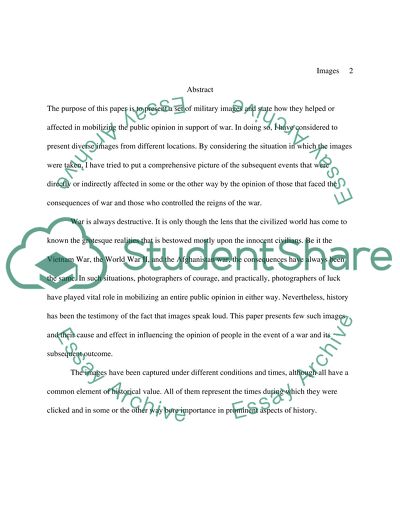Cite this document
(Images That Mobilized Popular Opinion in Support of War Coursework - 1, n.d.)
Images That Mobilized Popular Opinion in Support of War Coursework - 1. Retrieved from https://studentshare.org/visual-arts-film-studies/1577268-choose-a-set-of-military-images-or-objects-and-consider-how-they-have-mobilized-popular-opinion-in-support-of-war
Images That Mobilized Popular Opinion in Support of War Coursework - 1. Retrieved from https://studentshare.org/visual-arts-film-studies/1577268-choose-a-set-of-military-images-or-objects-and-consider-how-they-have-mobilized-popular-opinion-in-support-of-war
(Images That Mobilized Popular Opinion in Support of War Coursework - 1)
Images That Mobilized Popular Opinion in Support of War Coursework - 1. https://studentshare.org/visual-arts-film-studies/1577268-choose-a-set-of-military-images-or-objects-and-consider-how-they-have-mobilized-popular-opinion-in-support-of-war.
Images That Mobilized Popular Opinion in Support of War Coursework - 1. https://studentshare.org/visual-arts-film-studies/1577268-choose-a-set-of-military-images-or-objects-and-consider-how-they-have-mobilized-popular-opinion-in-support-of-war.
“Images That Mobilized Popular Opinion in Support of War Coursework - 1”. https://studentshare.org/visual-arts-film-studies/1577268-choose-a-set-of-military-images-or-objects-and-consider-how-they-have-mobilized-popular-opinion-in-support-of-war.


